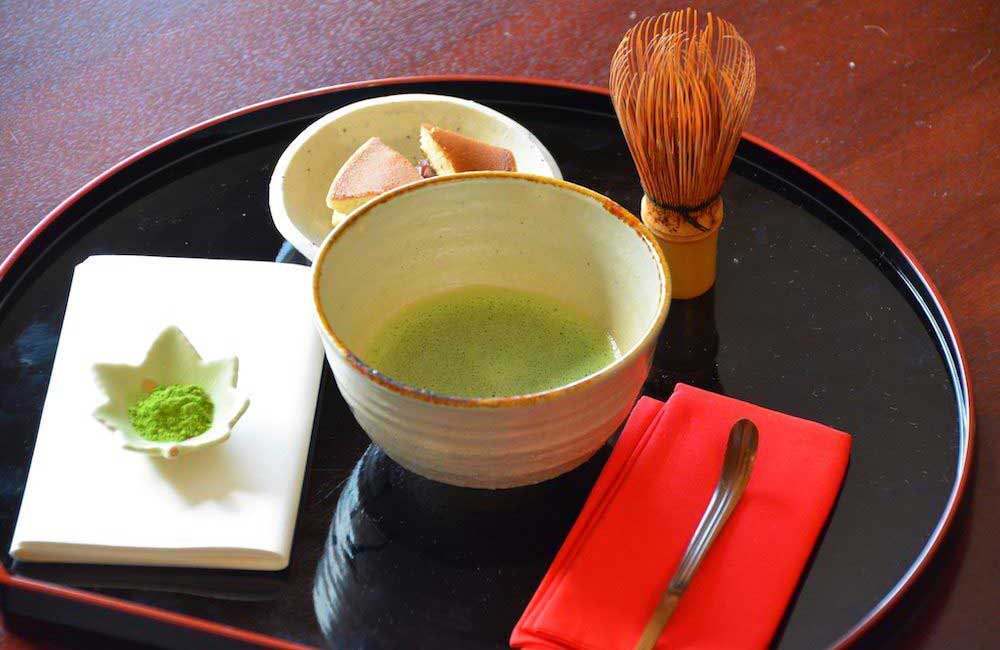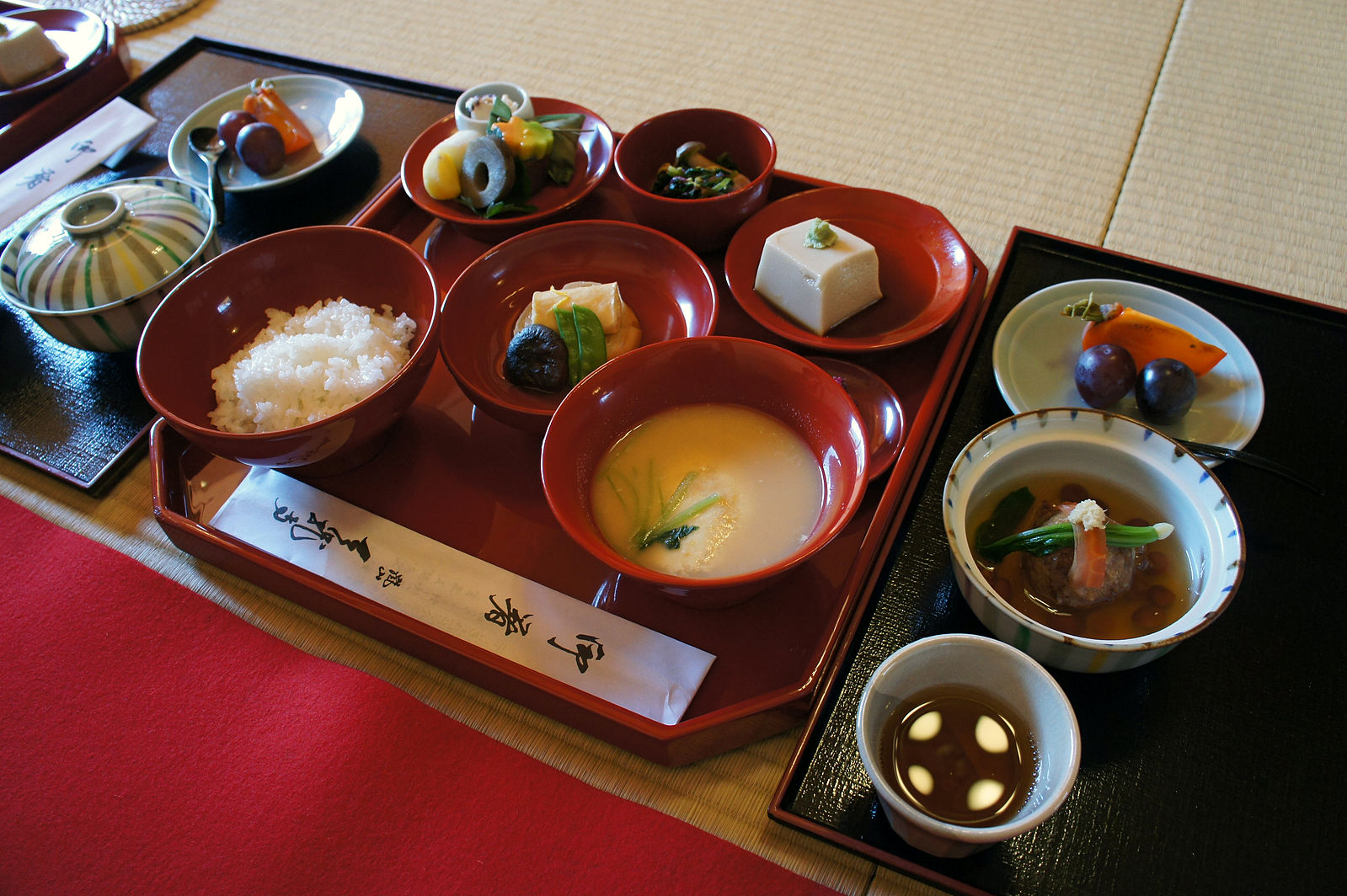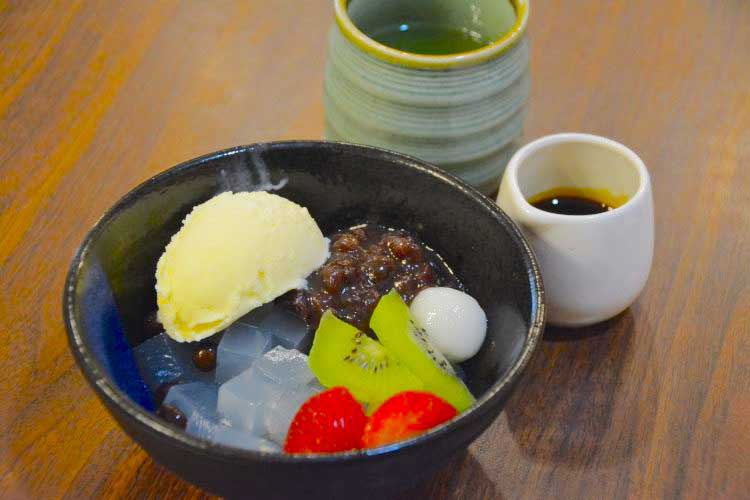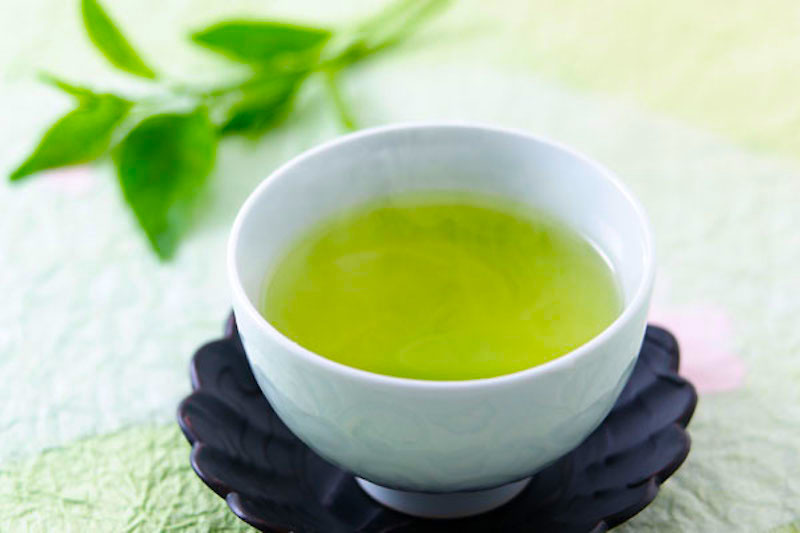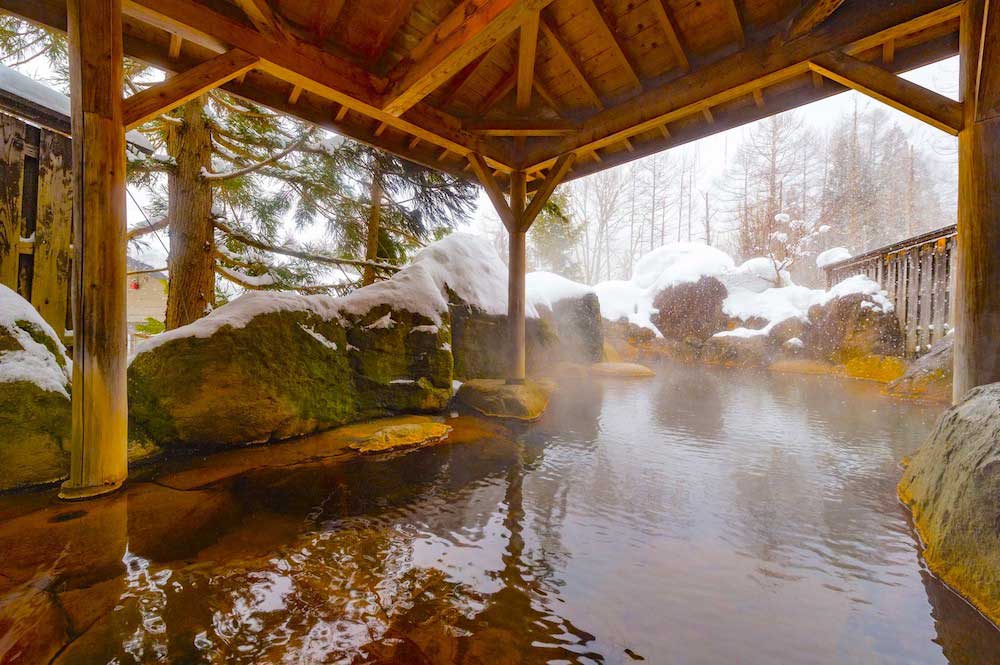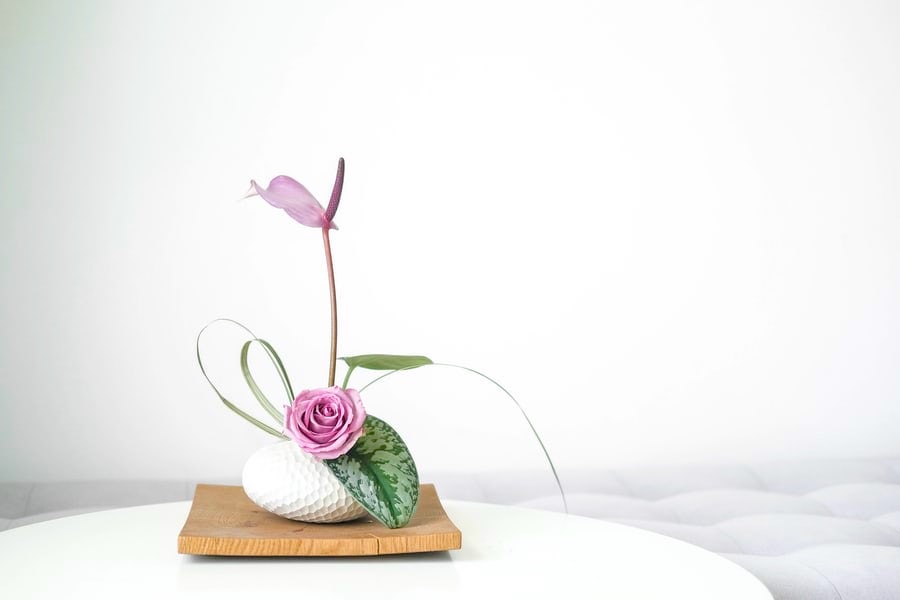
日本を代表する伝統芸能のひとつ、華道。
お花、葉、茎などを器に美しく飾るだけでなく、自然や宇宙を包括的に表現する芸術ともいわれています。
今回は、華道の歴史や基本的な技術などを英語で説明する表現をご紹介していきます。
ご興味のある方は、当サイトで 英語クイズ(5000問) を出題しておりますので是非ご覧ください。
目次
華道の簡単な説明
日本文化が海外でますます注目されていることもあり、最近ではそのまま kadō や ikebana で通じることが多くなっていますが、
英語では一般的に (Japanese) flower arrangement と訳されます。
Kadō is a traditional Japanese art where flowering plants and tree branches are arranged in a vase.
(華道とは、草花や樹枝などを花器に飾る日本の伝統的な芸術です。)
Kadō is a form of decorative art where blossoms, stems and leaves are secured on kenzan (a needlepoint holder) in a vase.
(華道とは、お花や茎、葉などを、花器に剣山で固定して飾る芸術です。)
Kadō is also called ikebana.
(華道は、生け花とも呼ばれます。)
Ikebana is a Japanese-style flower arrangement.
(生け花は、日本風のフラワーアレンジメントです。)
In the general style of ikebana, a kenzan (needle-point holder) is placed in the vase with water, flowering plants and branches of trees are secured on it, and the length and shapes are adjusted with scissors.
(生け花の基本形は、お水を張った花器に剣山を置き、草花や樹枝を刺して固定し、長さや形をハサミで調整します。)
The origin of ikebana is said to date from the 6th century when Buddhist monks offered up flowers to Buddha.
(生け花の起源は、6世紀に仏教僧が仏前に草花を供えたことに始まるといわれています。)
It began with “kuge,” the Buddhist practice of floral offerings, and spread to the use of flowers to decorate rooms.
(仏教の「供花」をもとに、花で部屋を飾ることへ発展しました。)
Contemporary Ikebana was established in the 16th century, the Muromachi Period.
(現代の生け花は、16世紀の室町時代に確立されました。)
When sadō (tea ceremony) became popular in the 16th century, flowers were decorated in chashitsu (a tea ceremony room).
(16世紀に茶道が普及した頃に、茶室にお花が飾られるようになりました。)
Ikebana esteems asymmetrical shapes and empty spaces and places an aesthetic sense on flowers, leaves, twigs and more.
(生け花は非対称や余白を重んじ、花、葉、小枝など全てに美的価値を置きます。)
Ikebana aims to bring out the inner beauty of flowers and other natural materials and express emotion.
(生け花は、お花などの自然素材の内なる美しさを引き出し、心情を表現することを志すものです。)
Ikebana is known to be an “aesthetic of subtraction” because it expresses a rich world with just a small amount of vegetation and flowers.
(生け花は「引き算の美学」として知られており、少ない草木やお花を使って豊かな世界を表現します。)
The phrase “aesthetics of subtraction” describes an approach that brings out boundless beauty and abundance by reducing elements.
(「引き算の美学」とは、要素を少なくすることによって無限の美しさと豊かさを浮き立たせる手法を表しています。)
The Western-style flower arrangement is called “aesthetics of addition,” which uses flowers abundantly.
(欧米のフラワーアレンジメントは「足し算の美学」と呼ばれ、お花を豊富に使って生けます。)
In Ikebana, flowers and plants represent “ten-chi-jin” (heaven, earth and people) and express complete harmony with the universe.
(生け花では、お花や植物は「天地人」を表しており、宇宙との完全な調和を表現します。)
Ikebana places emphasis on expressing the subtle beauty of flowers and other natural materials.
(生け花は、お花などの自然素材の繊細な美しさを表現することを重視しています。)
In ikebana, a sense of the season is also important.
(生け花では、季節感も大切です。)
Now, there are three major ikebana schools, Ikenobō, Ohara and Sōgetsu.
(現在は、池坊、小原、草月の三大流派があります。)
Many people practice ikebana as a means of self-development.
(自己啓発の一環として生け花を習う人も多くいます。)
People carefully appreciate the whole composition, the combination of flowers, and the vase.
(全体の構成やお花の組み合わせ、花器などをじっくりと鑑賞します。)
華道に使われる道具 / Utensils
剣山
- frog
- pinholder
- spiked holder
- needle-point holder
- a metallic plate with a lot of thick needles pointing upwards
Kenzan is used to support stems and branches inside the flower vase.
(剣山は、花器の中で茎や枝を支えるために使われます。)
To secure the flowers and plants, a spiked holder called “kenzan” is used.
(お花や草木を固定するために剣山と呼ばれる道具が使われます。)
その他の道具
| 花器(kaki) | (flower) vase |
| つぼ(tsubo) | pot |
| かご(kago) | basket |
| 水盤(suiban) | basin |
| はさみ(hasami) | scissors |
| 針金(harigane) | wire |
| 霧吹き(kirifuki) | atomizer |
| のこぎり(nokogiri) | saw |
お花を生ける技術 / Techniques
お花を生けるための基本的な技術に関する英語表現です。
水切り /Cutting
Cut the stalks underwater to increase water absorption to preserve the freshness of the flower.
(お花を長持ちさせるために水中で茎を切り、水分を吸収させます。)
さばく / Trimming
Trim unnecessary twigs and leaves to make it look good.
(見栄えを良くするために、不要な枝や葉を取り除きます。)
ためる / Bending
Add curvature to a stalk or a branch to arrange it easily.
(生けやすいように、茎や枝に反りを加えます。)
留める / Fixing
Cut the ends of the branches to put them into the kenzan easily.
(剣山に刺しやすくするために、枝に切り込みを入れます。)
For branches, pierce them vertically and then tilt them.
(枝ものは、垂直に刺してから傾けます。)
For a thin stalk or branch, make a support with a thick stalk.
(細い茎や枝の場合は、添え木を使って支えます。)
お花の生け方 / How to arrange flowers
立花 / Rikka
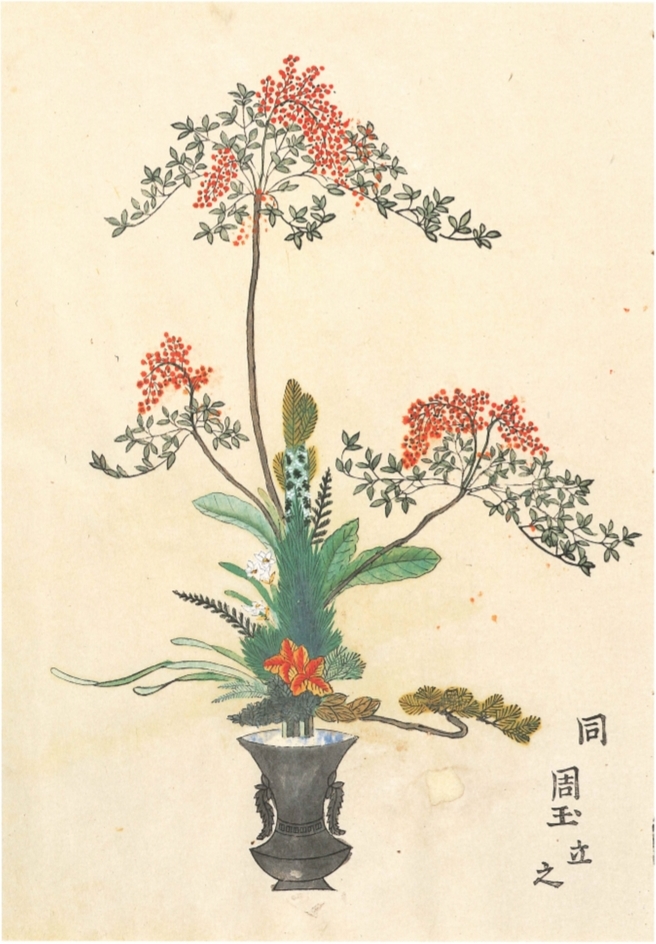
立花は、英語で standing style と呼ばれています。
“Rikka” is the oldest traditional style which was established during the Muromachi Period.
(立花は、室町時代に成立した最も伝統のある生け方です。)
Flowers in Rikka style were displayed in alcoves for ceremonies or receiving guests.
(立花は、儀式やおもてなしのために床の間に飾られました。)
“Rikka” mainly represents the natural beauty of landscapes and the universe.
(立花は主に、自然の美しさと森羅万象を表現しています。)
盛り花 / Moribana
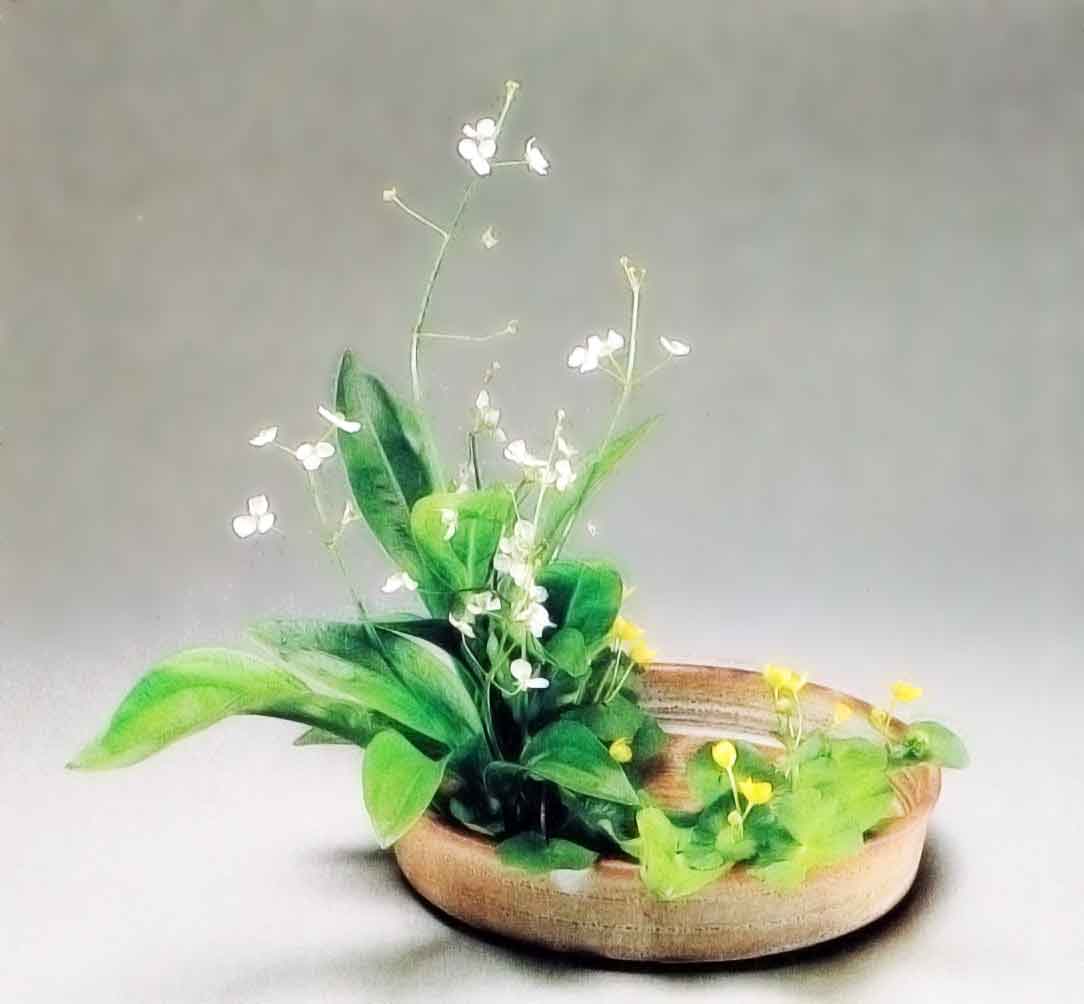
盛り花は、英語で upright style と呼ばれています。
“Moribana” is a form of upright-style arrangement.
(「盛り花」とは、直立型の生け方の一種です。)
“Moribana” is an upright style in which flowers are arranged in a basin or wide-mouthed vase.
(水盤や口の広い花器にお花を盛って生けることを「盛り花」といいます。)
The Ohara school is characterized by “Moribana” style.
(小原流は、「盛り花」という生け方が特徴です。)
In Moribana, arrange the flowers in the shape of three points of shin (center), soe (support), and tai (balance), which indicate heaven, earth, and people, respectively.
(盛り花では、それぞれ天、地、人を意味する真、副、体が三角形になるように生けます。)
投げ入れ / Nageire
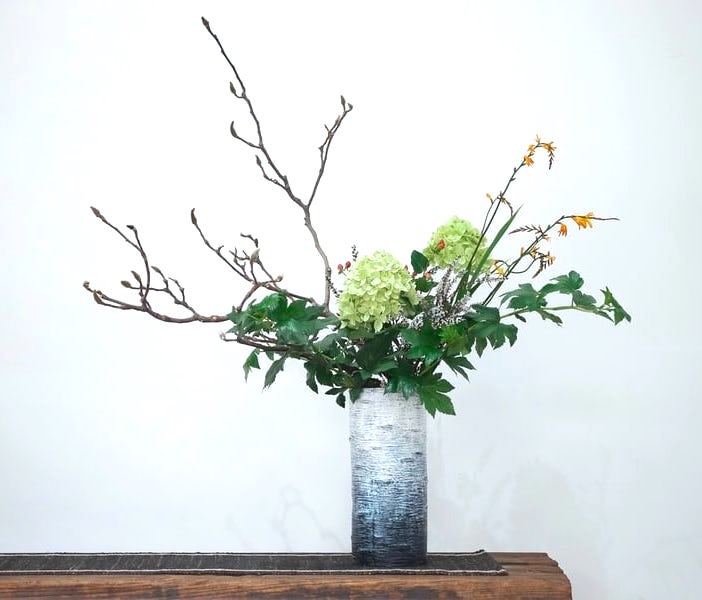
投げ入れは、英語で slanting style と呼ばれています。
“Nageire” is a slanting style in which flowers are arranged in a cylindrical vase.
(筒形の花器に生けることを「投げ入れ」といいます。)
“Nagerie” meaning “throw in,” are arranged in tall, narrow vases.
(Nageire は「投げ入れ」という意味で、高くて狭い花瓶を使って生けます。)
お花の種類
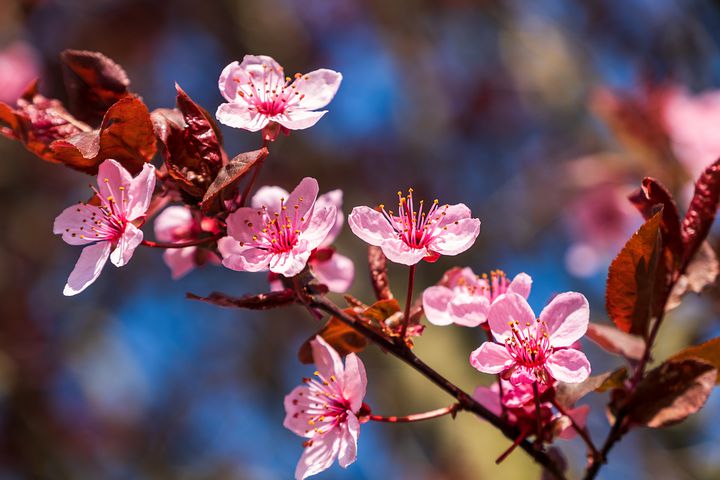
- 梅(ume):Japanese apricot
- 桜(sakura):cherry blossom
- すみれ(sumire):violet
- 百合(yuri):lily
- 菖蒲(shōbu):Japanese iris
- 紫陽花(ajisai):hydrangea
- 霞草(kasumisō):baby’s breath
- 桔梗(kikyō):Japanese bellflower
- りんどう(rindō):gentian
- 椿(tsubaki):Japanese camellia
- 菊(kiku):chrysanthemum
最後に
日本式の「引き算の美学」も、欧米式の「足し算の美学」もそれぞれに良いところがあり、「その空間をどのように演出するか」や「作者の心情をどのように表現するか」によって用途が異なりますので、どちらが優れているということではありませんが、日本の生け花の洗練された美しさは、「侘び・寂び」の精神が生んだ至高の芸術として世界を魅了し続けています。
海外の方々に日本の生け花を説明する上で、今回の記事がご参考になれば幸いです。
